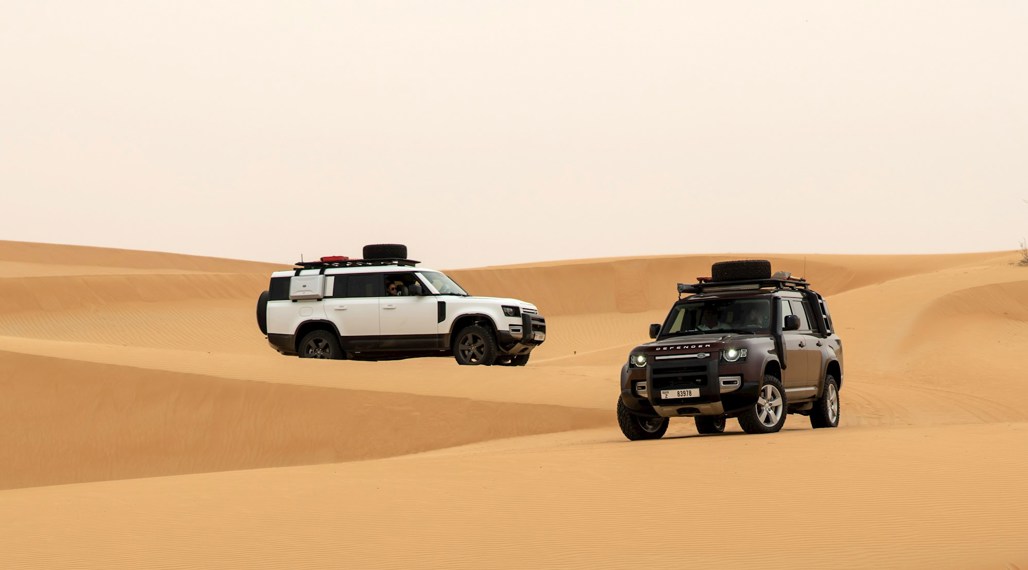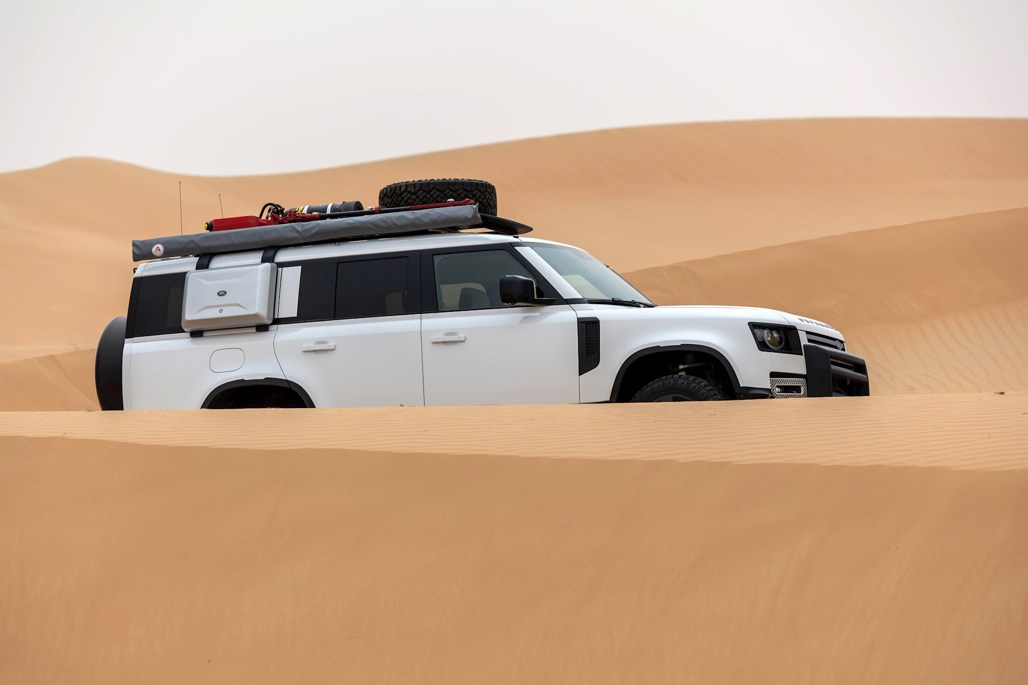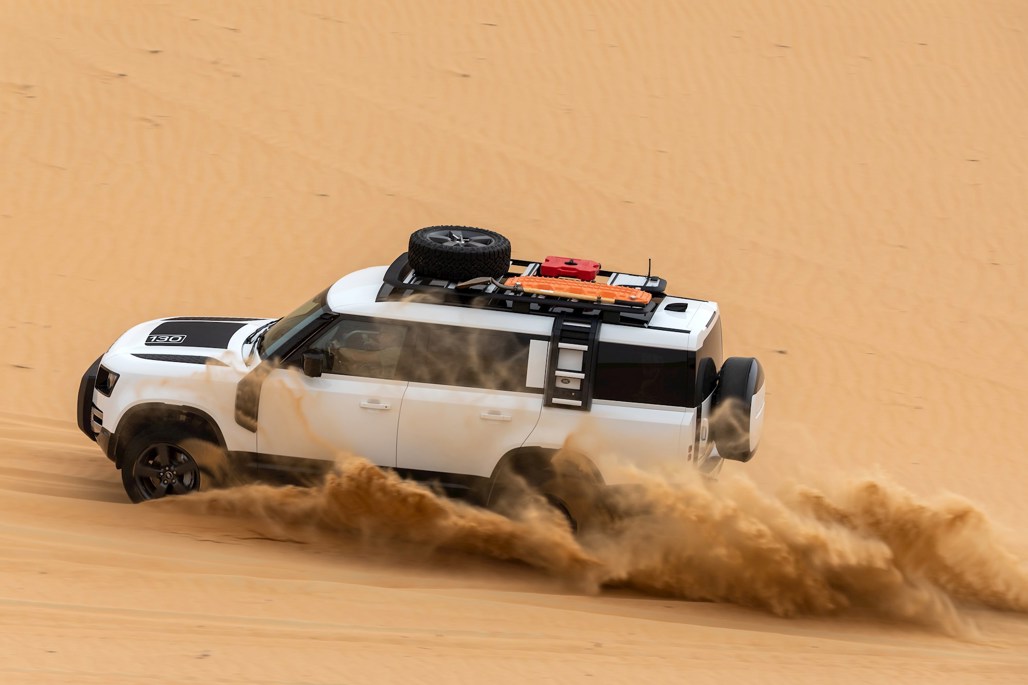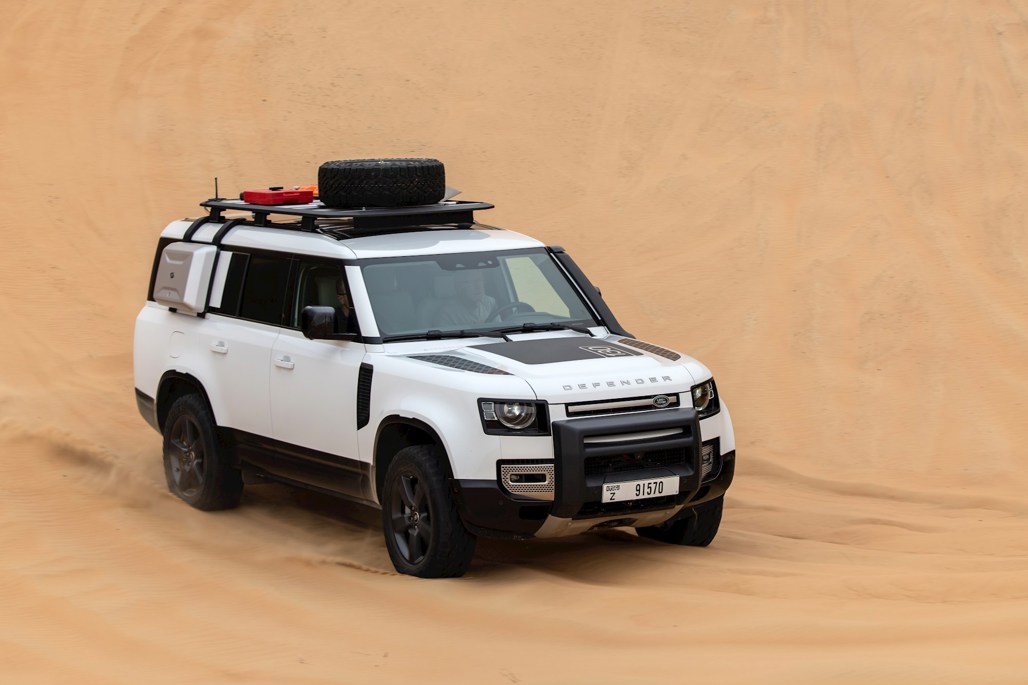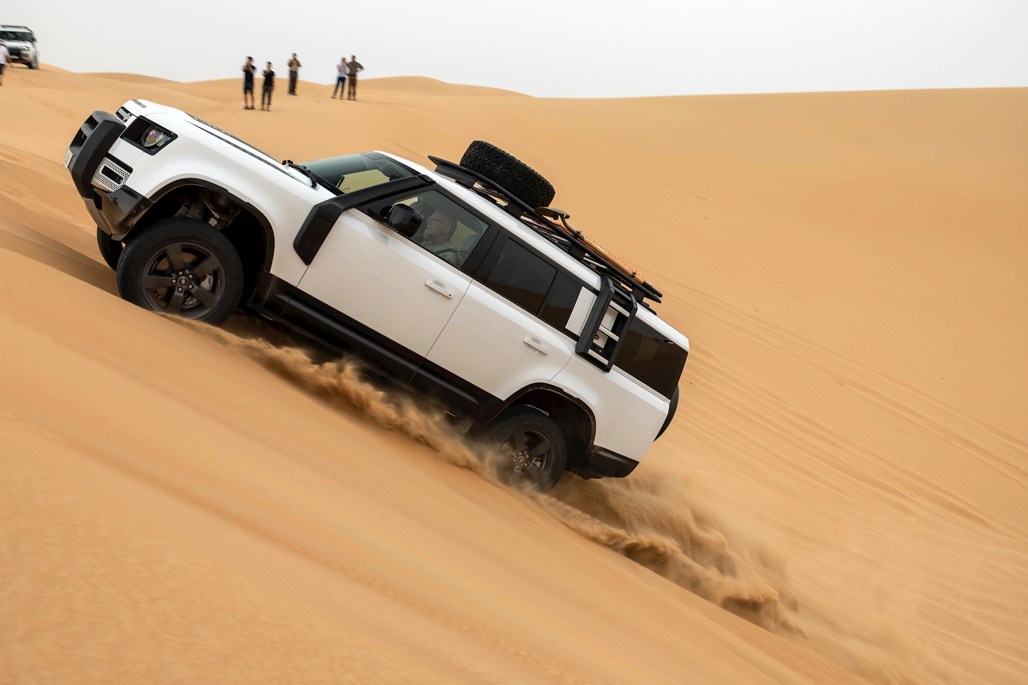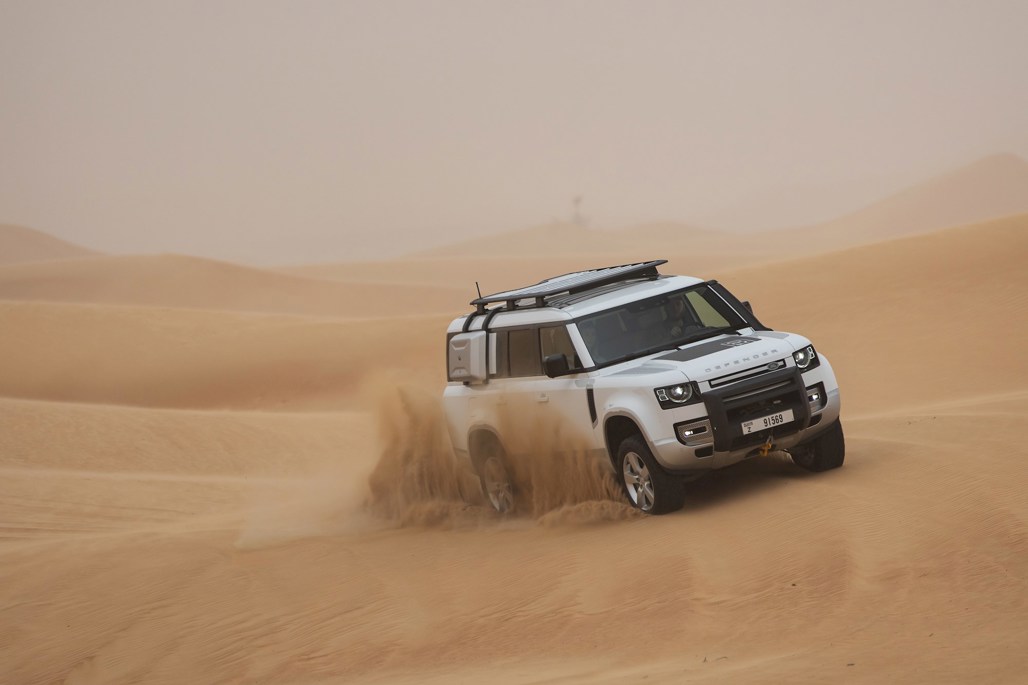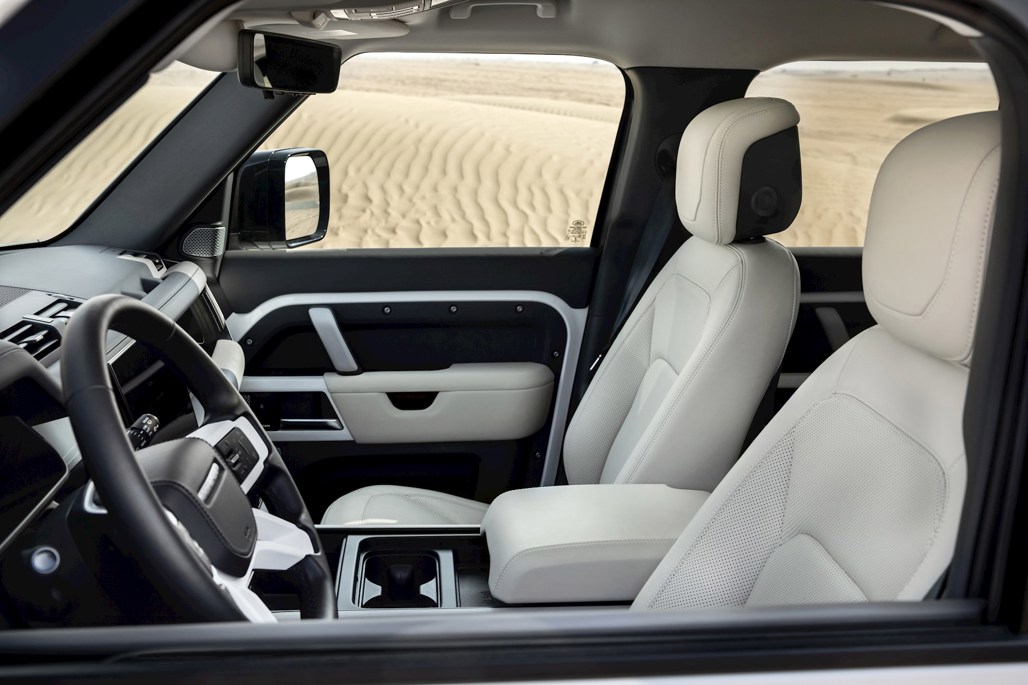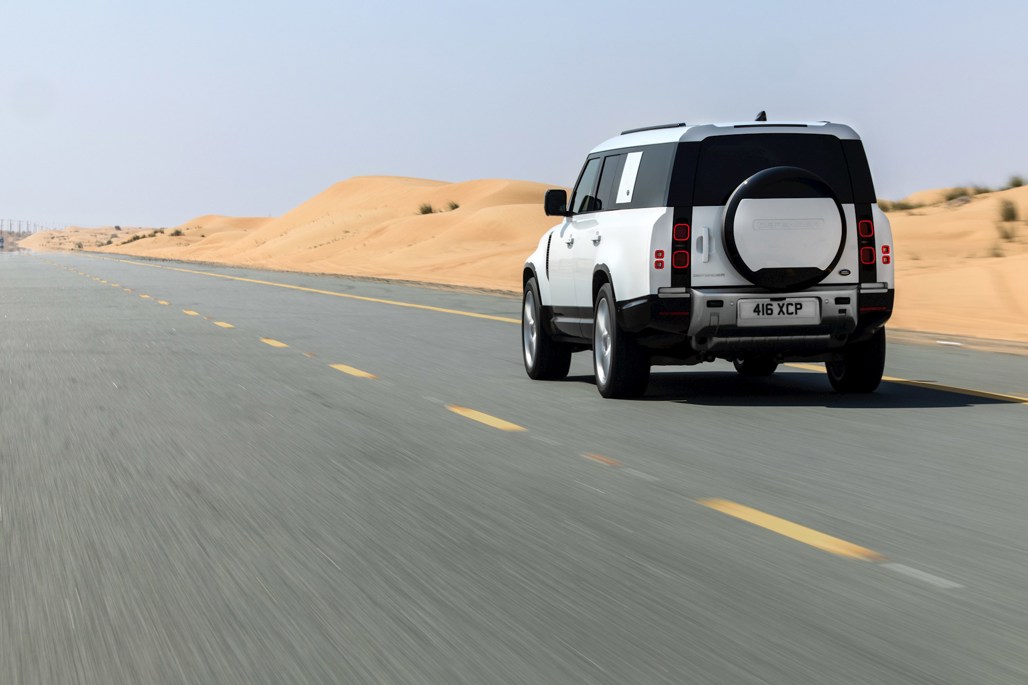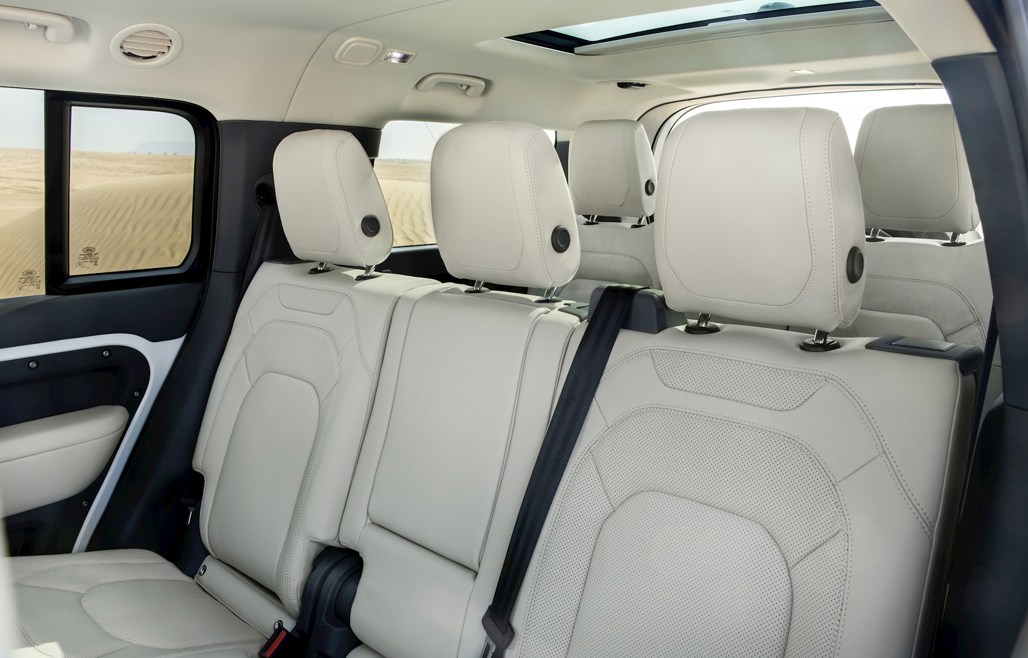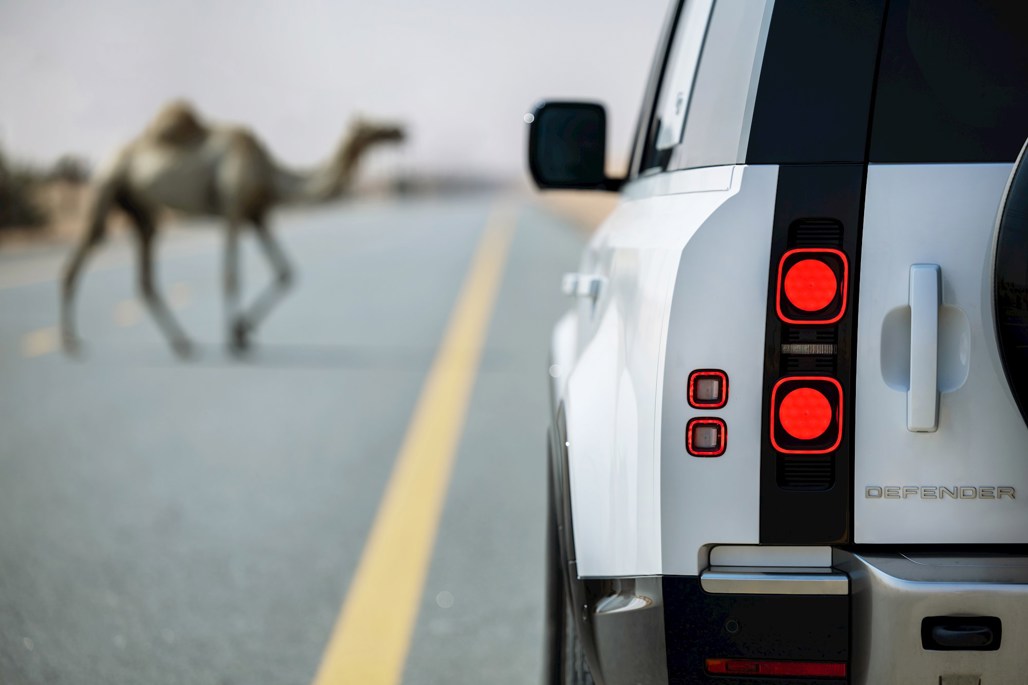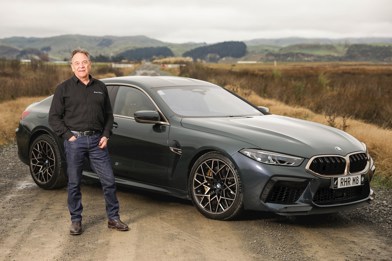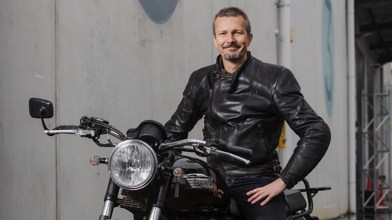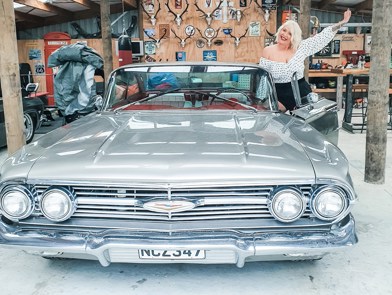With the latest-iteration Defenders 90 and 110 already selling well, Land Rover has now completed the model’s family dynamic by adding the eight-seater 130 to the range. We were invited to Dubai to check out the 340mm extension at the rear, the third-row seats and test the model’s sand-driving prowess on some of the country’s more taxing dunes.
“We designed all three vehicles together,” says Stuart Frith, vehicle programme director, JLR. “The 90 and 110 were introduced a number of years ago and 130 completes the picture.”
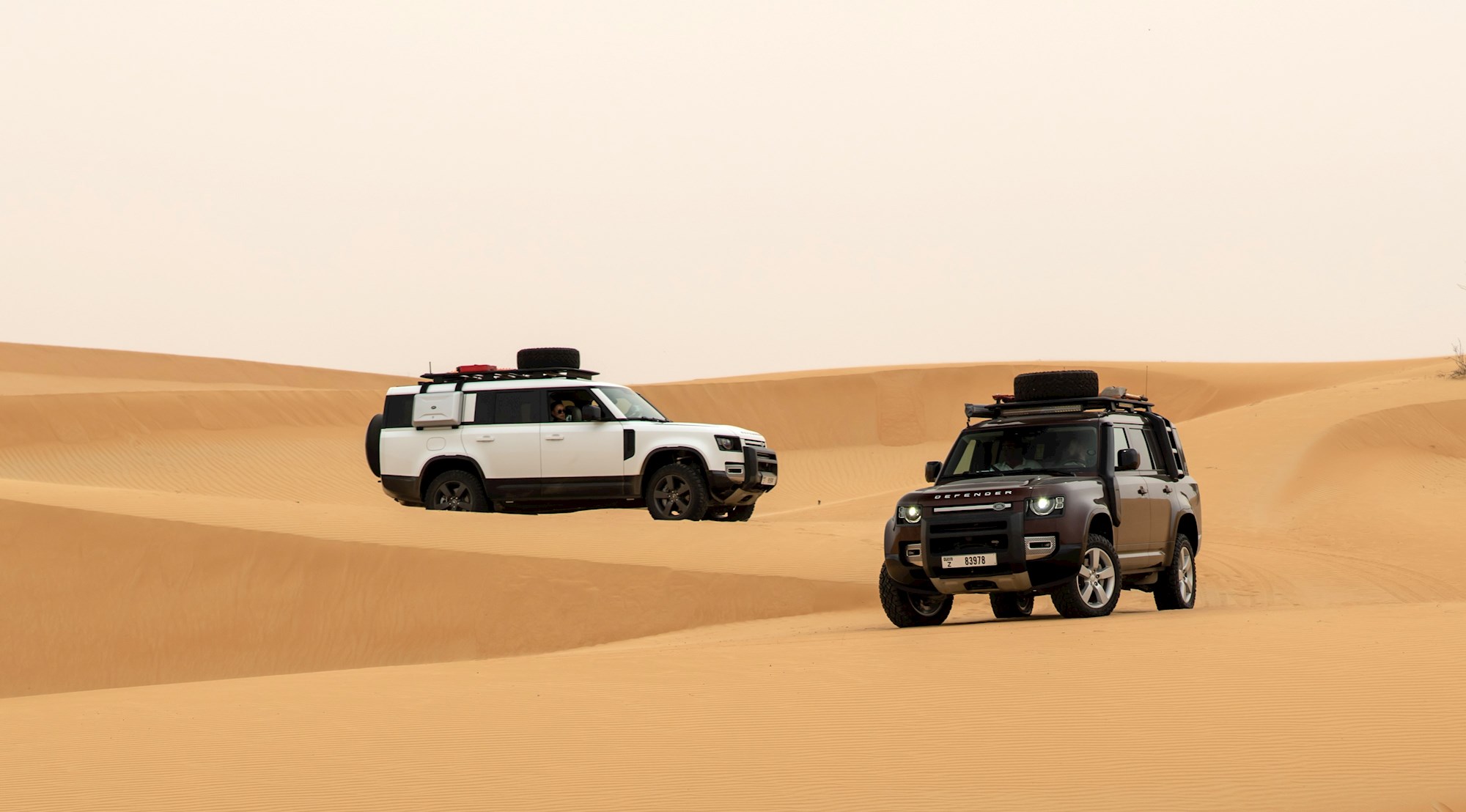
The 130 nameplate dates back about 30 years to the original Defender, and originally related to the longer 130-inch wheelbase; but this new model has quite a different concept.
First and foremost, it’s been designed as an eight-seat vehicle from the onset. But rather than extending the wheelbase, it is exactly the same as the 110’s (3022mm), with all of the extension being behind the back axle. Land Rover says that by extending the vehicle beyond the rear wheel (as opposed to extending the wheelbase), you get more width behind the wheel arch housing which has allowed it to "comfortably" put three occupants in row three.
The third row offers really good posture, which is important for long journeys. Most of the other eight-seaters in the segment have the third row sitting lower, with the occupants' knees being higher and therefore more uncomfortable.
The third row has padded armrests, cupholders, USB sockets, small item stowage, four-zone climate control and even its own glass sunroof - giving natural light to the rear and (alas) negating the need for those classic alpine lights.
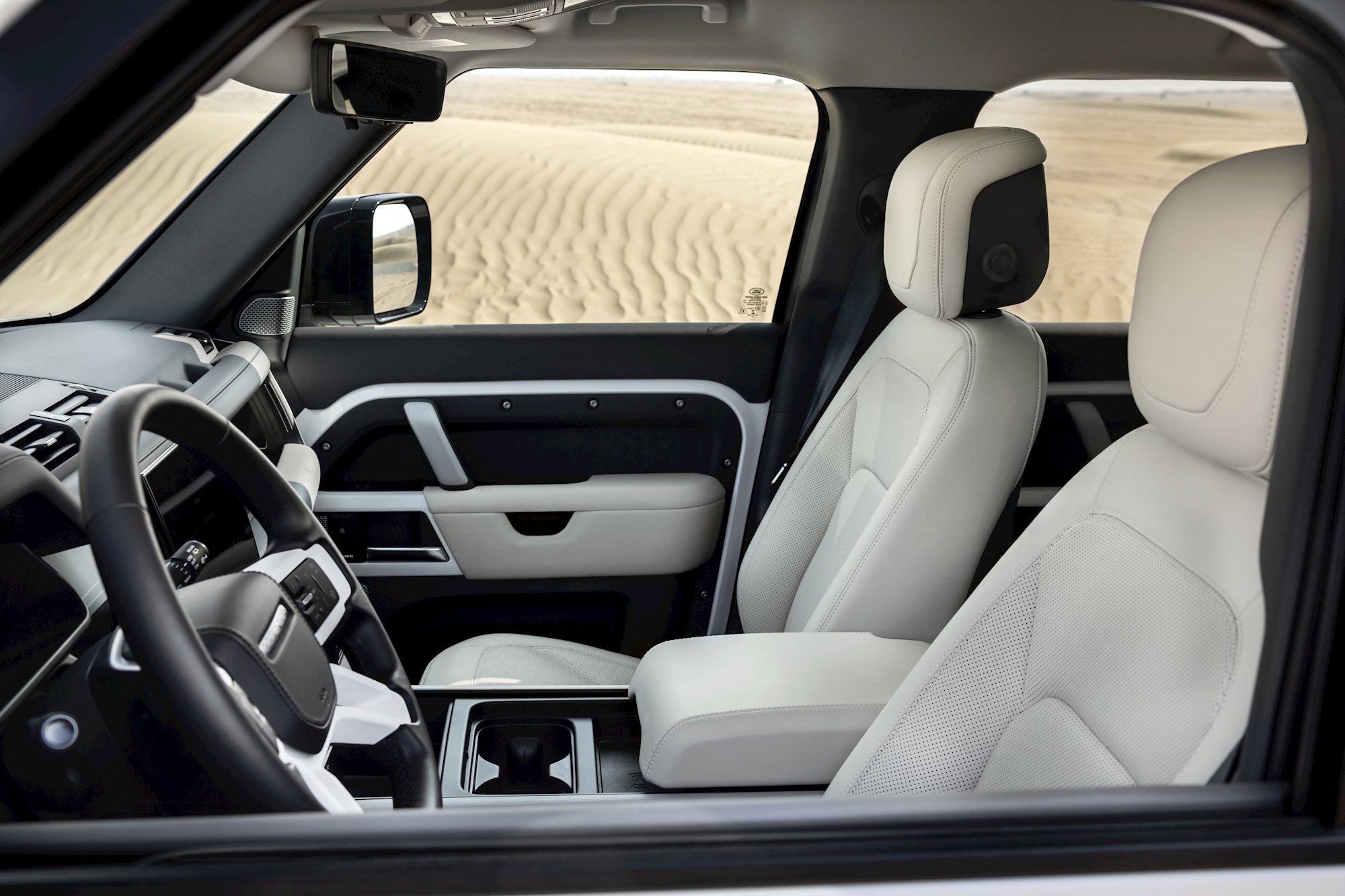
The architecture itself is the D7X (aluminium intensive), with the X standing for extreme; it's a very tough monocoque structure that provides a firm base for the suspension systems both on and off-road.
Infotainment comes via an 11.4-inch Pivi Pro system (as in the 90 and 110) and with software over-the-air JLR is continually updating the system, so 130 has the latest in connectivity such as "what3words" navigation (seriously, look into this, it’s amazing).
With the third row seats up, luggage space is 389l (1200l when folded down) and very configurable; there's also a five-seat version for those that prioritise luggage space, with 2,600l and a flat load floor.
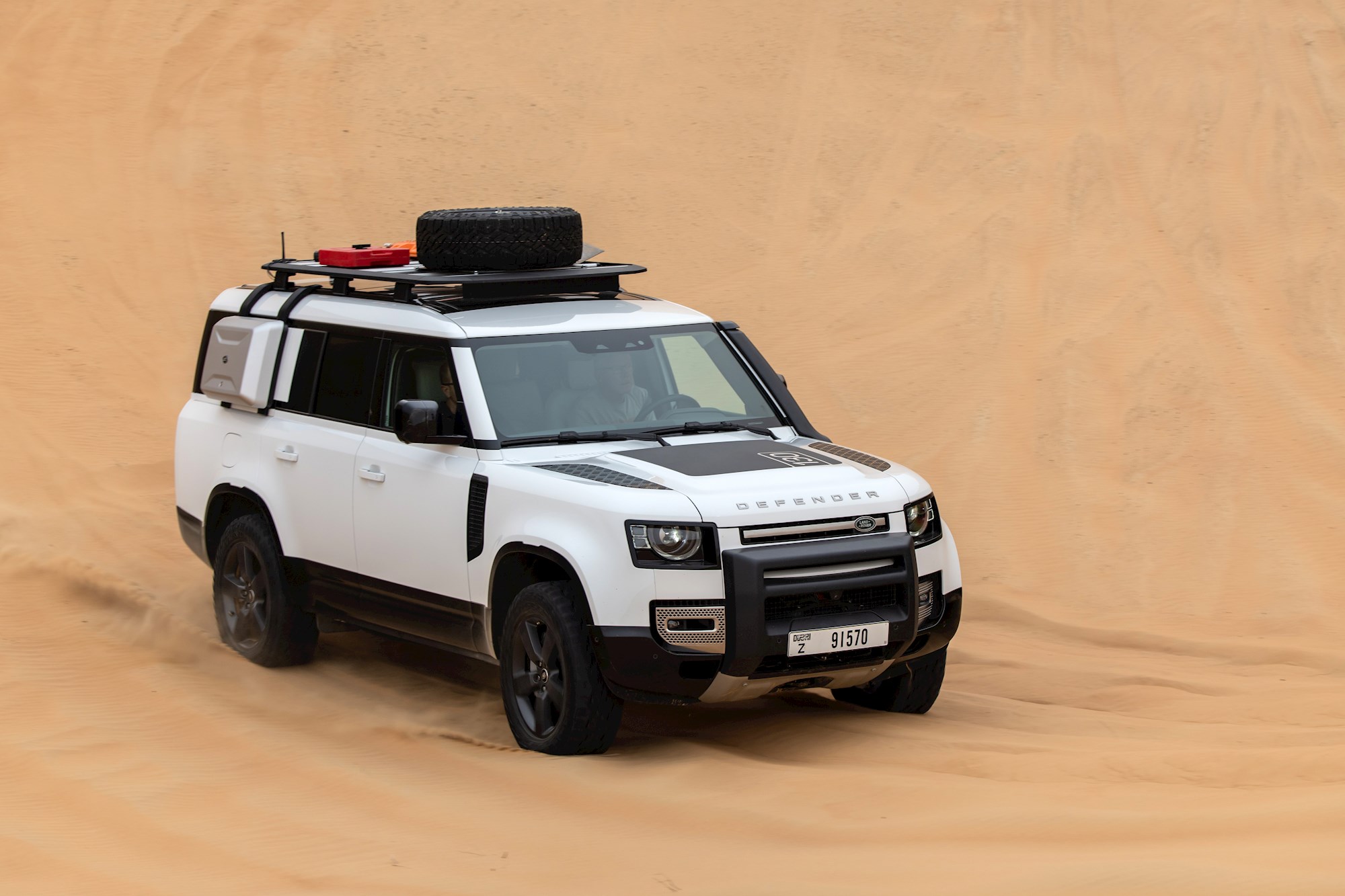
Outside, the proportions of the 130 are actually more classic than the 110. From a pure design perspective, the balance that you get with the rear overhang is the optimum of the three-car range. The linearity is there, the upright back end is still there and it clearly has the Defender silhouette. Oh and the spare wheel on the back gets a colour-coded hard cover, too.
More importantly, the rising rear gives a departure angle of 28.5 degrees, which is an advantage over the 130’s competitors when venturing off road. Approach and breakover angles are the same as the 110: 37.5/27.8deg respectively.
Air suspension is standard, with adaptive dynamics. This means 430mm of cross-axle articulation and wading up to 900mm. The ground clearance is 290mm in the off-road ride height; however, there's an extra height position above that, and (as I discovered) if the 130 is sat on the sand and you can’t move, it can help get you out of trouble.
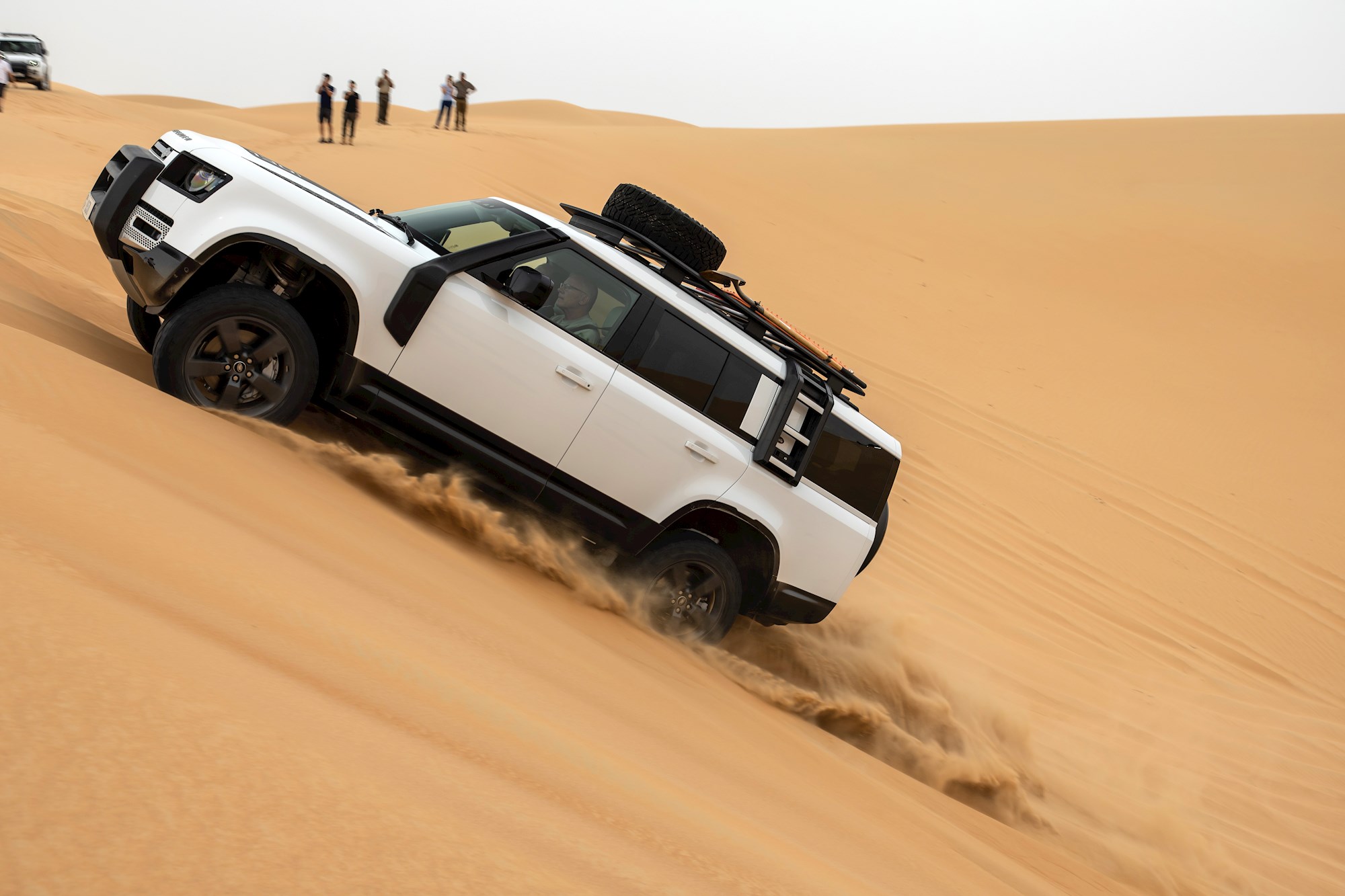
We were all assembled in Dubai because Land Rover has an engineering centre there; it bases its extreme hot-climate temperature test work there and of course, it’s where it conducts sand-driving tests.
For our driving pleasure, we were behind the wheel of the 130 SE P400 (3.0-litre six-cylinder petrol mild hybrid with 400PS/550Nm), in either Fiji White or my pick of Sedona Red with Windsor leather seats and smoked oak veneer. All models were already well-equipped with the side storage box and ladder, but our rides also came with a roof rack complete with extra spare wheel, extra fuel, sand ladders and a shovel (no bucket).
To underline the severity of what we were to expect, the 130’s also came with an additional protective system on the front and a Bluetooth winch - we were instructed to "push the cars and ourselves to our limits, but enjoy it".

The initial convoy drive from Dubai Creek Harbour to the nursery dunes took about an hour, giving us plenty of time to get to know the biggest Defender. Oddly enough, its 5.36m length doesn’t feel too imposing on the tarmac and aside from the wind noise generated by the additional off-road gear, the cabin was rather serene. The seats were supportive yet supple and the air suspension (in Comfort) simply lapped up the miles.
For the first sand dune introduction, we let the 130’s Terrain Response 2 system figure it all out by itself, which it did with ease. The sand was soft but the gradients were not too steep, and we all navigated the slopes with aplomb: "It’s a bit like skiing, you have to float through it". However, things got more extreme when we got through the gates of a special "hand-picked" reserve.
The Goodyear Duratrac tyres were dropped to 20psi, Sand mode was engaged and the height was raised - along with our pulse rates. We were specifically told to not stop on the flat, but as I found out, it’s not always possible when travelling in convoy, and with the 130 in front coming to an abrupt stop on an incline, I managed to dig my wheels in on the flat. The first to do so; yay.
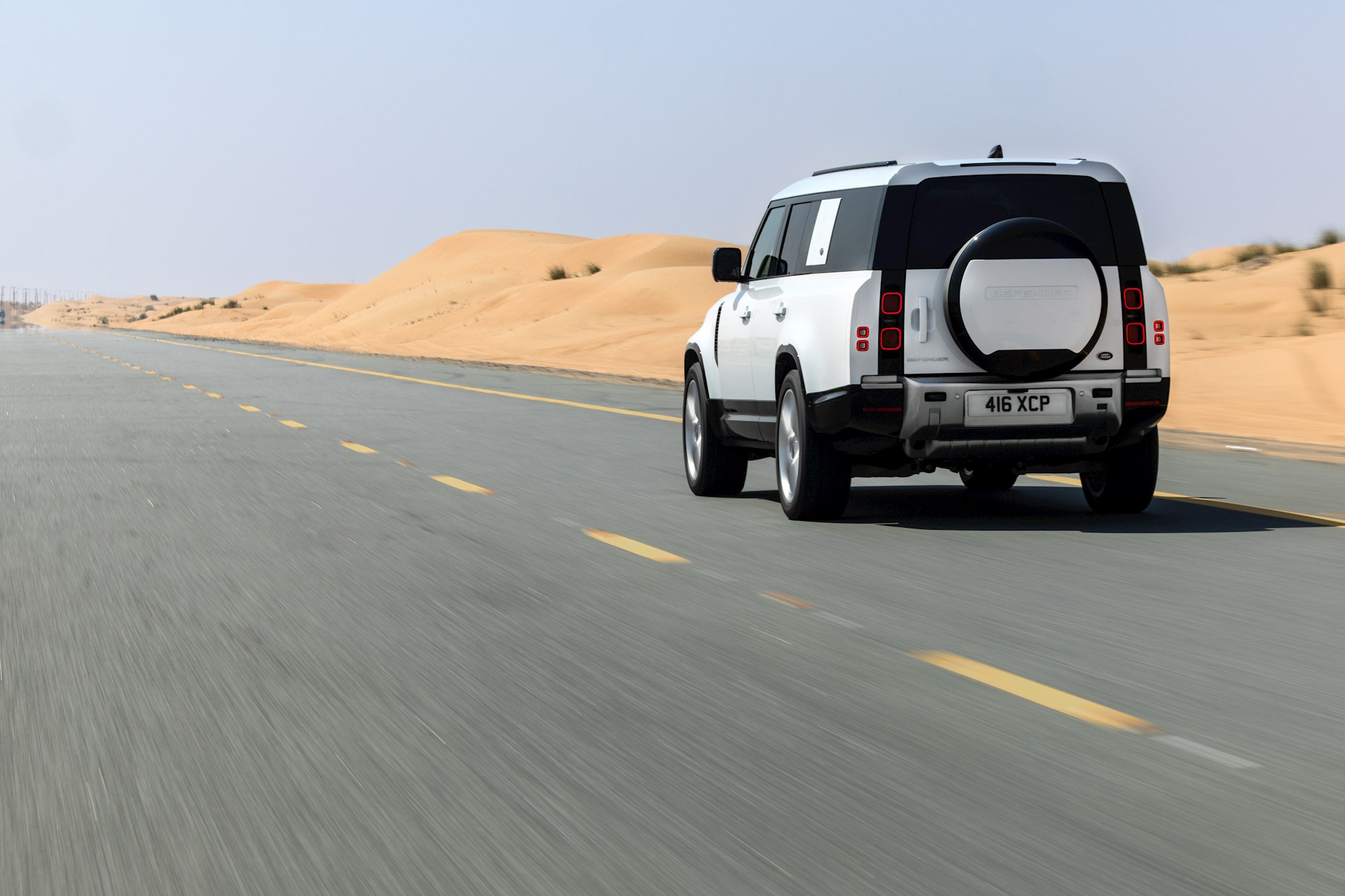
Thankfully, the combination of expert tutelage, raising the ride height, engaging rock mode and being slow on the throttle had me out of my rut in a jiffy. I wish to point out that this was the only time I got stuck and others fared much worse; but even so, they managed to get free with a little help from a tow or two. No 130 was left behind.
There were a lot of heart-in-mouth moments, with gradients and slopes that I for one didn’t think we’d conquer. But even with us group of rookies behind the wheel the Defender more than proved its worth.
Once clear of our sand-rovering (and tyres being reinflated), we were left to our own devices and Pivo Pro navigation to get to our final destination, the Bab Al Shams resort, which included a spirited 160km/h drive (the actual speed limit) along Abu Dhabi freeways. It was a total contrast to the dune driving but again, the big 130 wasn’t fazed at all.
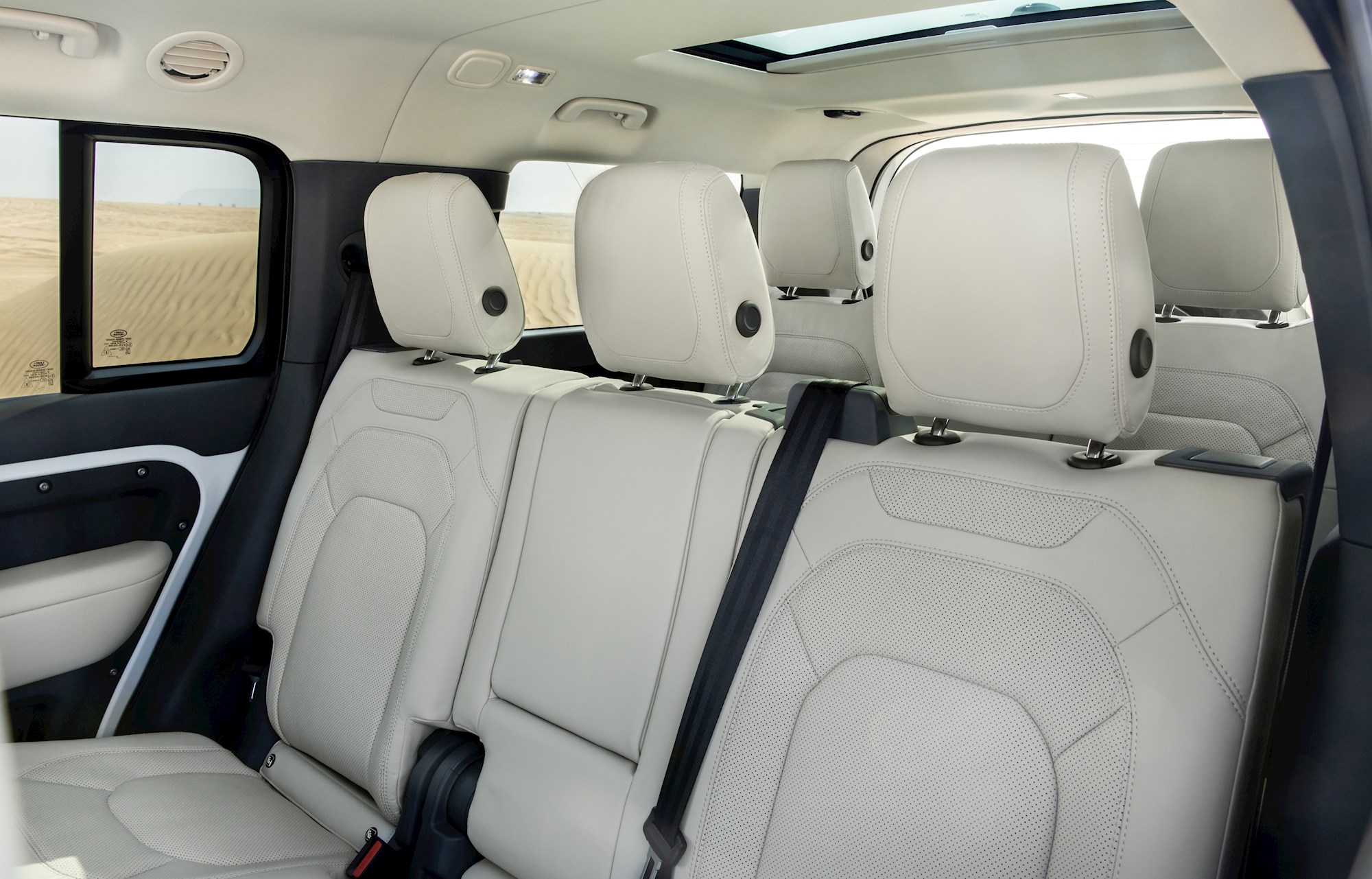
The new 130 not only completes the Defender family, but it can take all the family with it... wherever that may be. With "all-terrain capability" being an understatement of epic proportions, the Defender 130 is a sophisticated explorer that offers comfort and refinement to all, especially those in the normally forgotten world of row three.
LAND ROVER DEFENDER 130
ENGINE: 3.0-litre turbo-diesel six or 3.0-litre turbo-petrol six
POWER: 221kW/650Nm (diesel) or 294kW/550Nm (petrol)
GEARBOX: 8-speed automatic, AWD with low-range transfer
CONSUMPTION: 8.2-10.1l/100km (WLTP)
PRICES: $163,900-$165,900

